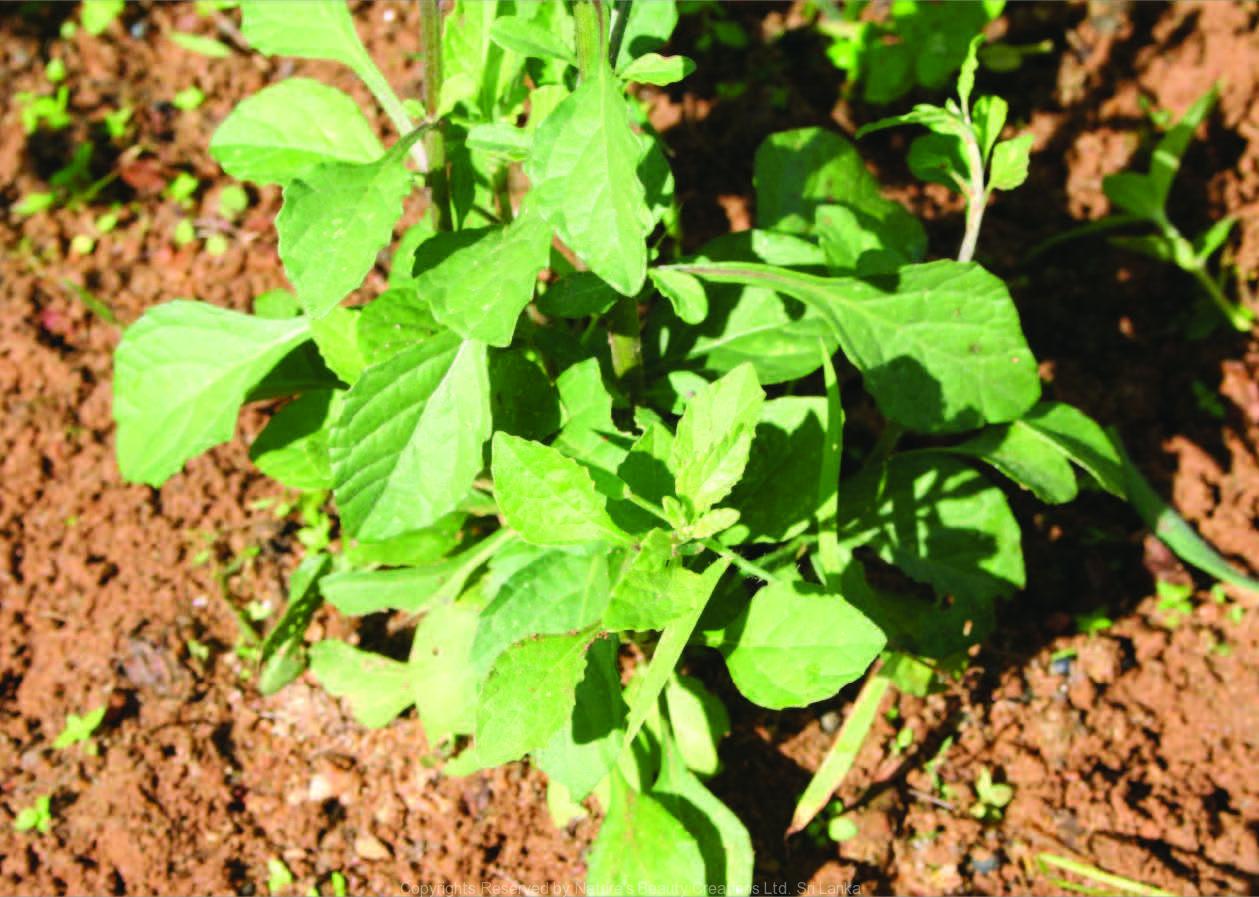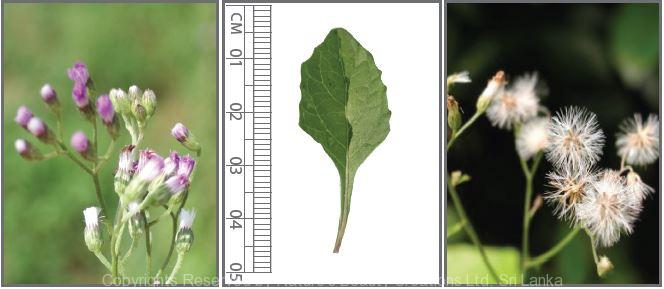

Traditional Knowledge
Useful plant parts :
Aerial part, root, flower and leaf
Uses in traditional medicine :
- Soup of the aerial parts is stomachic, diaphoretic and carminative
- Infusion of roots acts as a vermifuge and could be used in dropsy
- Juice of flowers are applied thrice a day to treat conjunctivitis, and has anthelmintic properties
- Leaf porridge is used to improve damaged liver
Scientific Research
Chemical constituents:
Sesquiterpene: vernocinolide A, β-amyrin, lupeol and their acetates, sterols: β-sitosterol, stigmasterol, α-spinasterol from whole plant
Bioactivity :
Chloroform, methanol and ether extracts of leaves: analgaesic, antipyretic, anti-inflammatory, antioxidative
Clinical:
Ingredient of the “Cystone therapy”, which is used to reduce urinary oxalate excretion
References : Chen, X. et al., (2006), Sesquiterpenoids from Vernonia cinerea, Natural Product Research, 20(1), 31-35. Guha, G. et al., (2011), Therapeutic Potential of Polar and Non-Polar Extracts of Cyanthillium cinereum In Vitro, Evid Based Complement Alternat Med. Iwalewa, E.O. et al., (2003), Analgesic, antipyretic, anti-inflammatory effects of methanol, chloroform and ether extracts of Vernonia cinerea less leaf, Journal of Ethnopharmocology, 86(2-3), 229-234. Misra, T. N. et al., (1984), Chemical Constituents of Vernonia cinerea, Part I. Isolation and Spectral Studies of Triterpenes, Journal of Natural Products, 47 (2), 368-372. Pendse, A. K. et al., (1984), Effect of Indigenous Drugs on Idiopathic Hyperoxaluria in Stone Formers, Asian Medical Journal, 2, 136.
Copyrights Reserved By
Natures Beauty Creations



